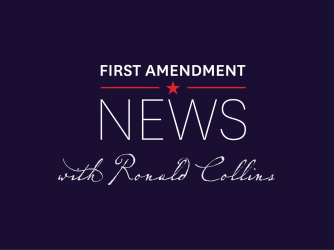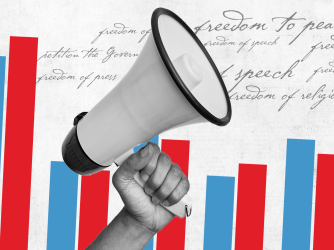Table of Contents
From Milton to The New York Times: How the free press shaped the free world

Jared Nally, former editor-in-chief of The Indian Leader, the award-winning student publication at Haskell Indian Nations University, was forbidden from engaging in routine newsgathering activities. Haskell interfered with the student newspaper’s financial and administrative operations by stonewalling requests to confirm the paper’s funding and account balance and by refusing to officially recognize the paper for an entire academic year. This culminated in FIRE helping Jared file a lawsuit against Haskell to restore the rights of student journalists.
Thomas Jefferson once wrote that “were it left to me to decide whether we should have a government without newspapers or newspapers without a government, I should not hesitate a moment to prefer the latter.” A free press ideally serves as a check on the government, a watchdog of a free society. Its purpose is considered so important that the press is sometimes referred to as “the Fourth Estate” — an entity designed to review the three branches of government.
The press should be able to operate independently from government. Centuries ago, the English Parliament passed licensing laws that provided that a printer could only operate with a governmental license. In fact, it was the English licensing law of 1643 that led John Milton to wax eloquently about freedom in “Areopagitca.” The experience with licensing laws led English scholar William Blackstone to inveigh against prior restraints on speech. Chief Justice Warren Burger wrote in Nebraska Press Asss’n v. Stuart (1976) that such pre-publication restraints on expression are “the most serious and least tolerable infringements on the First Amendment.”
Freedom of the press is as vital for student journalists, who sometimes face significant hurdles when publishing information that is considered too critical, sensitive, offensive, or threatening to school officials.
The U.S. Supreme Court ruled against prior restraints in Near v. Minnesota (1931) when Minnnesota sought to apply a state law that allowed the government to declare a newspaper a nuisance and shut it down. Decades later, the Court ruled in New York Times Co. v. United States (1971) — the Pentagon Papers case — that the government could not prevent The New York Times and The Washington Post from publishing a study about how the U.S. government got involved in Vietnam. In his concurring opinion, Justice Hugo Black explained: “The press was protected so that it could bare the secrets of government and inform the people. Only a free and unrestrained press can effectively expose deception in government.”
Times v. Sullivan and the expansion of press freedoms
The First Amendment not only limits prior restraints on the press but also often protects the press’ ability to report on matters and be free from subsequent punishment. The Supreme Court expanded the concept of freedom of the press in the celebrated libel law decision, New York Times Co. v. Sullivan (1964). In that decision, the Court reversed a crippling jury verdict against the newspaper for exposing civil rights abuses in Montgomery, Alabama, outlined in an editorial advertisement titled “Heed Their Rising Voices.”
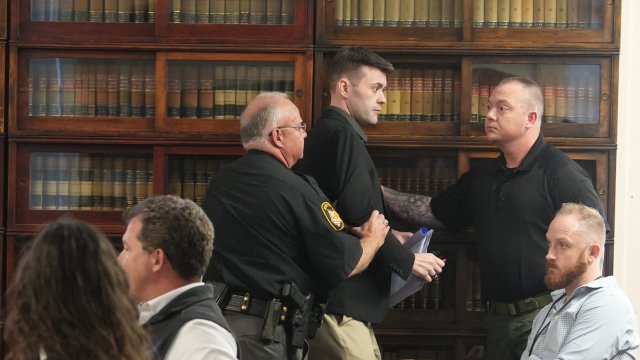
ARRESTED FOR JOURNALISM: Ohio newspaper editor hit with bogus ‘wiretapping’ charge and seizure of phone and laptop after publishing trial recording
News
Derek Myers leads a small newspaper, the Scioto Valley Guardian, serving southern Ohio.
The ad contained some factual inaccuracies, causing L.B. Sullivan, the Montgomery city commission with authority over the police department to sue The New York Times and four ministers who prominently signed the ad. An all-white Alabama jury awarded Sullivan a $500,000 jury verdict — a decision upheld by the Alabama state appellate courts.
However, the Times appealed to the U.S. Supreme Court and prevailed. The Court explained that newspapers and individuals could criticize public officials and not face liability for libel unless the offended public officials could show by clear and convincing evidence that the material in question was made with actual malice — defined as knowing the material was false or acting in reckless disregard of the truth or falsity of the material. The decision in Times v. Sullivan saved the civil rights movement and constitutionalized libel law, causing free-speech scholar Alexander Meikejohn to proclaim it was an occasion for “dancing in the streets.”
Famed First Amendment lawyer Lee Levine cogently explains that “as the Court explained in Sullivan, freedom of the press encompasses not just the right to be free from prior restraints on publication, but also to be largely exempt from any punishment when it reports the truth about matters of public concern.”
Reporter shield laws
Free-press disputes also arise when law enforcement authorities attempt to force reporters to turn over their notes and identify their confidential sources as part of an official investigation. While the Court in Branzburg v. Hayes (1972) ultimately rejected the idea that the press was entitled to special protection from government subpoenas to testify before grand juries, the Court noted that without some protection for seeking out the news, freedom of the press could be eviscerated.”
Justice Potter Stewart wrote a vigorous dissenting opinion, explaining that the government should not be able to turn reporters into handmaidens of the state unless the government (1) shows probable cause that the reporter has information clearly relevant to the investigation; (2) that the government cannot obtain the information from alternative sources; and (3) the government has a compelling and overriding need for the information. Stewart’s dissent formed the model for many so-called reporter shield laws.
Student journalists
Freedom of the press is as vital for student journalists, who sometimes face significant hurdles when publishing information that is considered too critical, sensitive, offensive, or threatening to school officials. Greg Lukianoff writes in his 2012 book “Unlearning Liberty: Campus Censorship and the End of Campus Debate” that “high school newspapers have been punished, censored, or shut down on a fairly regular basis” for writing on such harmless topics as abstinence, tattoos, abortion, and gay marriage.
The Supreme Court reduced the level of First Amendment protections for public high school journalists in Hazelwood School District v. Kuhlmeier (1988), reasoning that public school officials can censor student journalists “so long as their actions are reasonably related to legitimate pedagogical concerns.” The Court, per Justice White, defined these educational concerns quite broadly to include articles that were “ungrammatical, poorly written, inadequately researched, biased or prejudiced, vulgar or profane, or unsuitable for immature audiences.”
Journalists, including student journalists, should have the editorial discretion to determine what to publish free from the hand of governmental censorship and control.
The Court even identified as a legitimate pedagogical concern the fact that school officials could refuse to promote school-sponsored student speech that “associate[d] the school with any position other than neutrality on matters of political controversy.” This decision caused Justice William Brennan in dissent to accuse the majority of sanctioning “brutal censorship.” The decision led to a movement — that continues in part to this day — of trying to convince state legislators to pass “anti-Hazelwood” laws that provide greater protection to student journalists.
Sadly, the censorship of student journalists also occurs at the college and university level. The U.S. Court of Appeals for the Seventh Circuit actually sanctioned the use of the school official-friendly, rational basis standard in Hazelwood in Hosty v. Carter (2005), upholding rank censorship at Governors State University in Illinois. That decision led Illinois to pass the College Campus Press Act, giving greater protection to college level journalists.
College and university student journalists should have the editorial discretion to determine whether to publish certain articles, not university officials. College officials should not act as the decency policy and attempt to punish journalists who published information that they do not like. That was one of the key lessons from the U.S. Supreme Court’s decision in Papish v. Board of Curators of Missouri (1973).
School officials had expelled graduate student Barbara Papish for distributing an underground newspaper that contained a political cartoon of police officers raping the Statue of Liberty and the Goddess of Justice. The Supreme Court reversed, finding that Papish had a First Amendment right to disseminate such material and that “the mere dissemination of ideas — no matter how offensive to good taste — on a state university campus may not be shut off in the name alone of conventions of decency.”
Conclusion
Freedom of the press remains an invaluable liberty in a free society. As many state declarations of rights in state constitutions still proclaim, freedom of the press is a “bulwark of liberty.” Free-speech scholar and Brennan biographer Stephen Wermiel calls it a “pillar of democracy.”
Journalists, including student journalists, should have the editorial discretion to determine what to publish free from the hand of governmental censorship and control. A true democratic society and one committed to freedom of expression must recognize a free press. After all, the most fundamental of all First Amendment principles is the ability of the people to criticize government officials. Thomas Jefferson was correct when he wrote to James Currie in 1786: “Our liberty depends on the freedom of the press, and that cannot be limited without being lost.”
Recent Articles
FIRE’s award-winning Newsdesk covers the free speech news you need to stay informed.
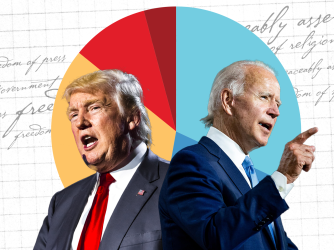
New FIRE poll: Americans equally skeptical Biden or Trump will protect First Amendment rights
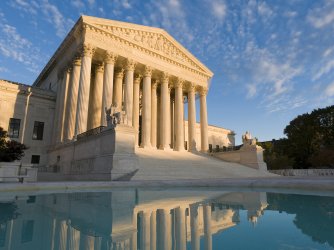
The 8 First Amendment cases the Supreme Court will decide this term
